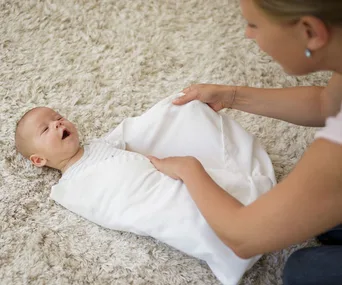Your body
If you’ve been a bit slack about exercising for the last few months, it’s not too late to do something about it. As an incentive, consider the fact that getting your circulation going increases your baby’s oxygen supply and reduces your risk of varicose veins and piles.
Keep it simple – you don’t have to join a class, squeeze your bump into a leotard (aggghhh!) and leap about to stay fit. Try walking and swimming (antenatal exercise classes in water are excellent, because your bump is supported by the water, which makes you feel weightless), but avoid strenuous, unfamiliar workouts. You can also make an enormous difference to your fitness levels by slotting exercise into your daily routine: at work, always walk up (and down) the stairs instead of taking the lift; vacuum vigorously; walk, walk, walk.
(Always check with your doctor before starting a new exercise regime during pregnancy, particularly if you have complications, such as bleeding, high blood pressure or heart disease.)
Don’t ignore your pelvic floor
The most important exercise of all during pregnancy only takes a few minutes every day, and you don’t even need to pull on your trainers to do it. Irritating as it may be, exercising your pelvic floor muscles is absolutely essential if you want to avoid incontinence after the birth (it goes without saying that your sex life will also reap the benefits).
Your midwife will explain the technique: it’s basically a matter of clenching the muscles that control the flow of urine, holding the clench for a few seconds, then letting go slowly. Repeat as often as possible – 50 times, three times a day is good.
Finding it difficult to stick to? Talk to other mothers: listening to their scare stories about bladder leakage is a great motivator!
Pre-eclampsia
At every antenatal check-up, your blood pressure will be taken. This enables the midwife to check for signs of pre-eclampsia, a pregnancy illness that can be dangerous for you and your baby. The warning signs include severe headaches, flashing lights before your eyes, blood pressure shooting up and protein in your urine. Other symptoms are sudden weight gain, blurred vision and swollen face, hands and feet. If you develop any of these, see your GP or midwife immediately.

Pelvic floor exercises only take a few minutes every day.
(Credit: Getty Images)Your baby
Your baby now weighs 1kg. From crown to rump, she measures 24cm and her total length, stretched out from head to toe, is 34cm. (Babies’ legs aren’t usually included in the length until about now; because they’re curled up into the foetal position they can’t be easily measured.)
Fat facts
Your baby has started to develop a substance called brown fat in her chest, neck and groin. Designed to protect her and help her maintain body heat, this brown fat disappears when ordinary white fat begins to appear under the skin, making her look plumper.



